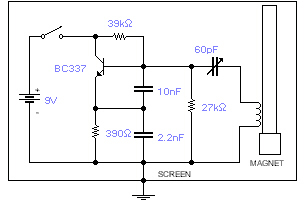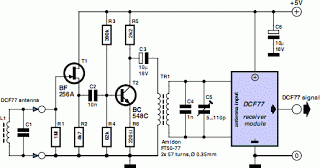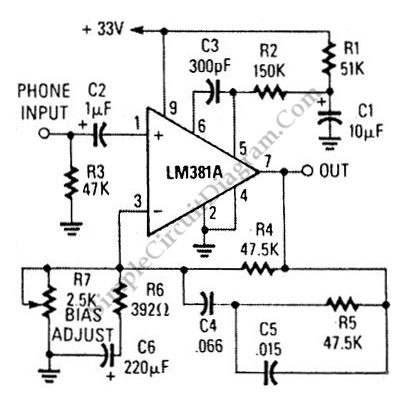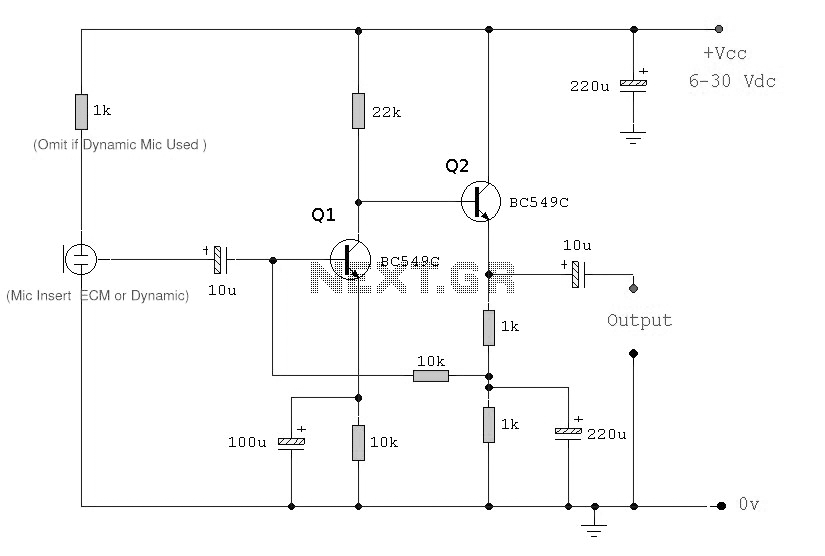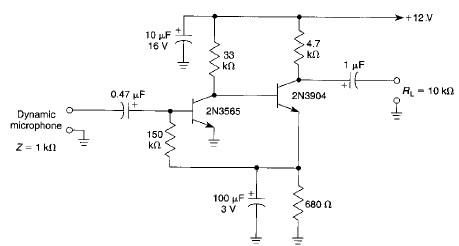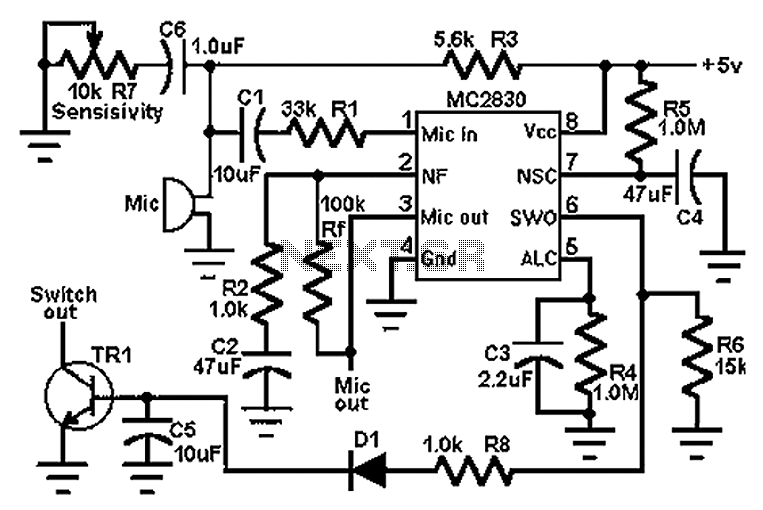
Magnetic pickup phono preamplifier
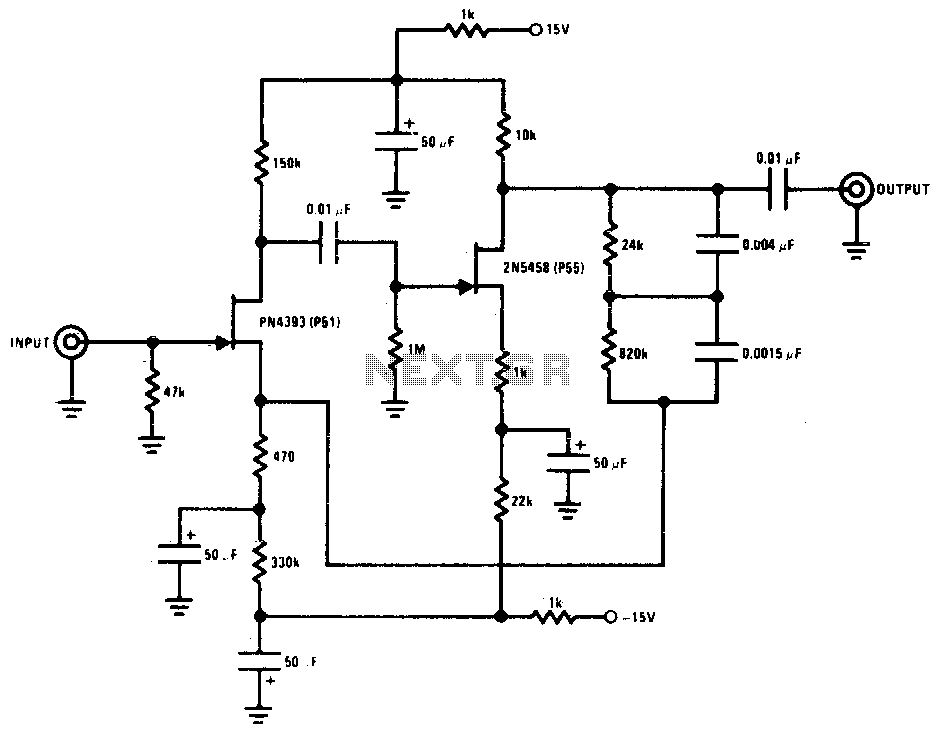
This preamplifier offers a loading ratio of better than -70 dB (referenced to a 10-ohm reluctance phono cartridge) and accepts millivolt input at 1 kHz. It has a dynamic range of approximately 35 dB of gain at 1 kHz (2 mV, 84 dB referenced to 1 kHz). The feedback input is designed for a 100 mV output. Additionally, it features a signal-to-noise ratio (S + N)/N that supports RIAA equalization.
This preamplifier is designed to optimize the performance of low-output phono cartridges, particularly moving coil types, by providing appropriate gain and impedance matching. The loading ratio of -70 dB indicates that the preamplifier effectively minimizes noise and distortion, ensuring high fidelity in audio reproduction. The specification of 2 mV input at 1 kHz signifies the preamplifier's capability to amplify weak signals without compromising sound quality.
The dynamic range of approximately 35 dB at 1 kHz indicates the preamplifier's ability to handle a wide range of audio signals, from the quietest to the loudest, without distortion. The feedback input designed for a 100 mV output allows for compatibility with standard line-level inputs, making it versatile for various audio setups.
The inclusion of RIAA equalization is crucial for phono preamplifiers, as it compensates for the inherent frequency response characteristics of vinyl records. This equalization ensures that the audio output closely matches the original recording, preserving the tonal balance and dynamics of the music.
In terms of circuit design, the preamplifier likely employs operational amplifiers configured in a non-inverting configuration to achieve the desired gain and low noise performance. Passive components such as resistors and capacitors would be utilized to set the gain, provide feedback, and implement the RIAA equalization curve. Proper layout and shielding techniques would be essential to minimize electromagnetic interference and maintain signal integrity throughout the circuit.This preamplifier provides proper loading ratio of better than - 70 dB (referenced to 10 to a reluctance phono cartridge. It provides mV input at 1 kHz) and has a dynamic range of approximately 35 dB of gain at 1 kHz (2 mV 84 dB (referenced to 1 kHz).
The feedback input for 100 mV output) It features (S + N)/N provides for RIAA equalization. 🔗 External reference
This preamplifier is designed to optimize the performance of low-output phono cartridges, particularly moving coil types, by providing appropriate gain and impedance matching. The loading ratio of -70 dB indicates that the preamplifier effectively minimizes noise and distortion, ensuring high fidelity in audio reproduction. The specification of 2 mV input at 1 kHz signifies the preamplifier's capability to amplify weak signals without compromising sound quality.
The dynamic range of approximately 35 dB at 1 kHz indicates the preamplifier's ability to handle a wide range of audio signals, from the quietest to the loudest, without distortion. The feedback input designed for a 100 mV output allows for compatibility with standard line-level inputs, making it versatile for various audio setups.
The inclusion of RIAA equalization is crucial for phono preamplifiers, as it compensates for the inherent frequency response characteristics of vinyl records. This equalization ensures that the audio output closely matches the original recording, preserving the tonal balance and dynamics of the music.
In terms of circuit design, the preamplifier likely employs operational amplifiers configured in a non-inverting configuration to achieve the desired gain and low noise performance. Passive components such as resistors and capacitors would be utilized to set the gain, provide feedback, and implement the RIAA equalization curve. Proper layout and shielding techniques would be essential to minimize electromagnetic interference and maintain signal integrity throughout the circuit.This preamplifier provides proper loading ratio of better than - 70 dB (referenced to 10 to a reluctance phono cartridge. It provides mV input at 1 kHz) and has a dynamic range of approximately 35 dB of gain at 1 kHz (2 mV 84 dB (referenced to 1 kHz).
The feedback input for 100 mV output) It features (S + N)/N provides for RIAA equalization. 🔗 External reference
